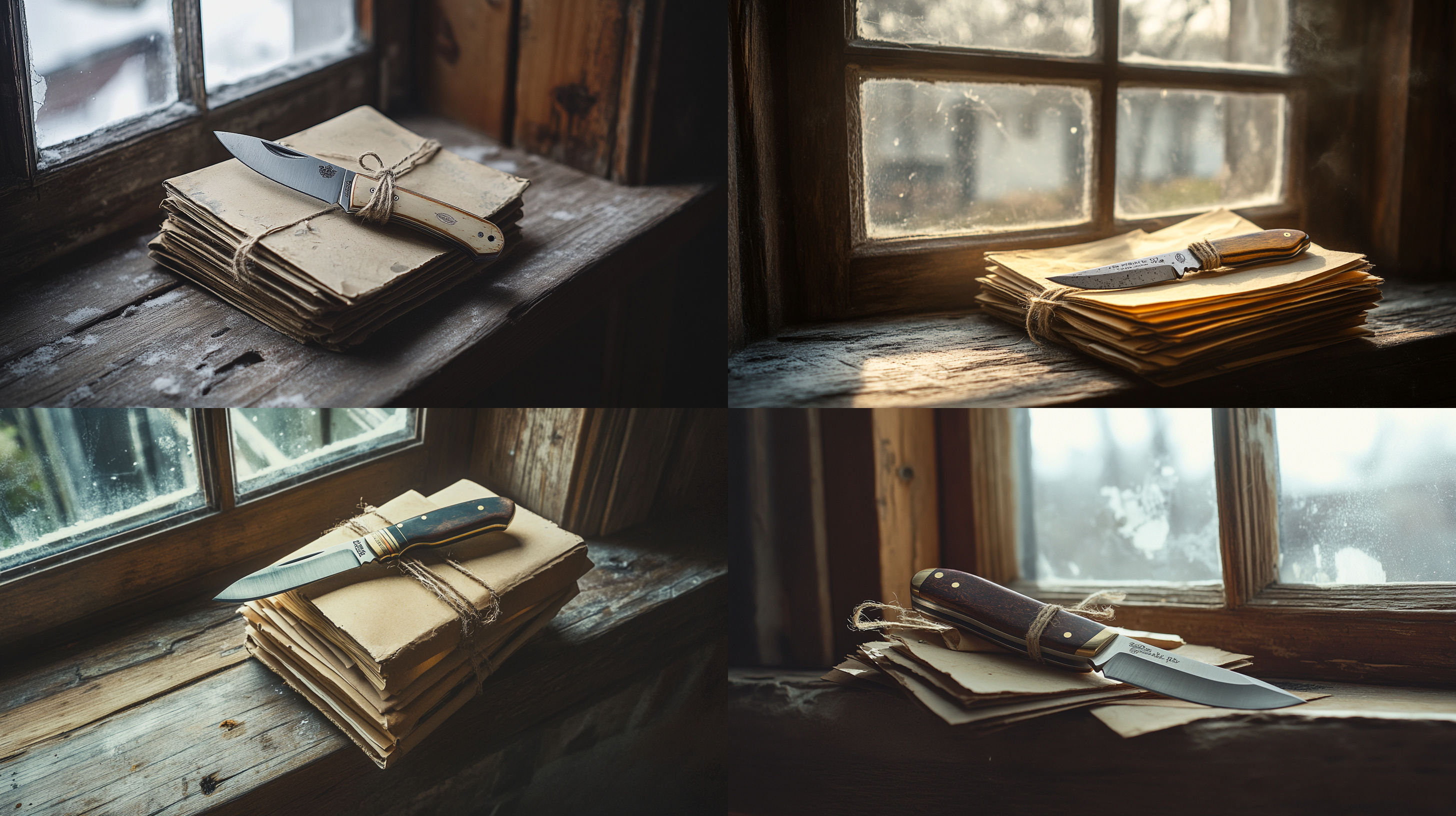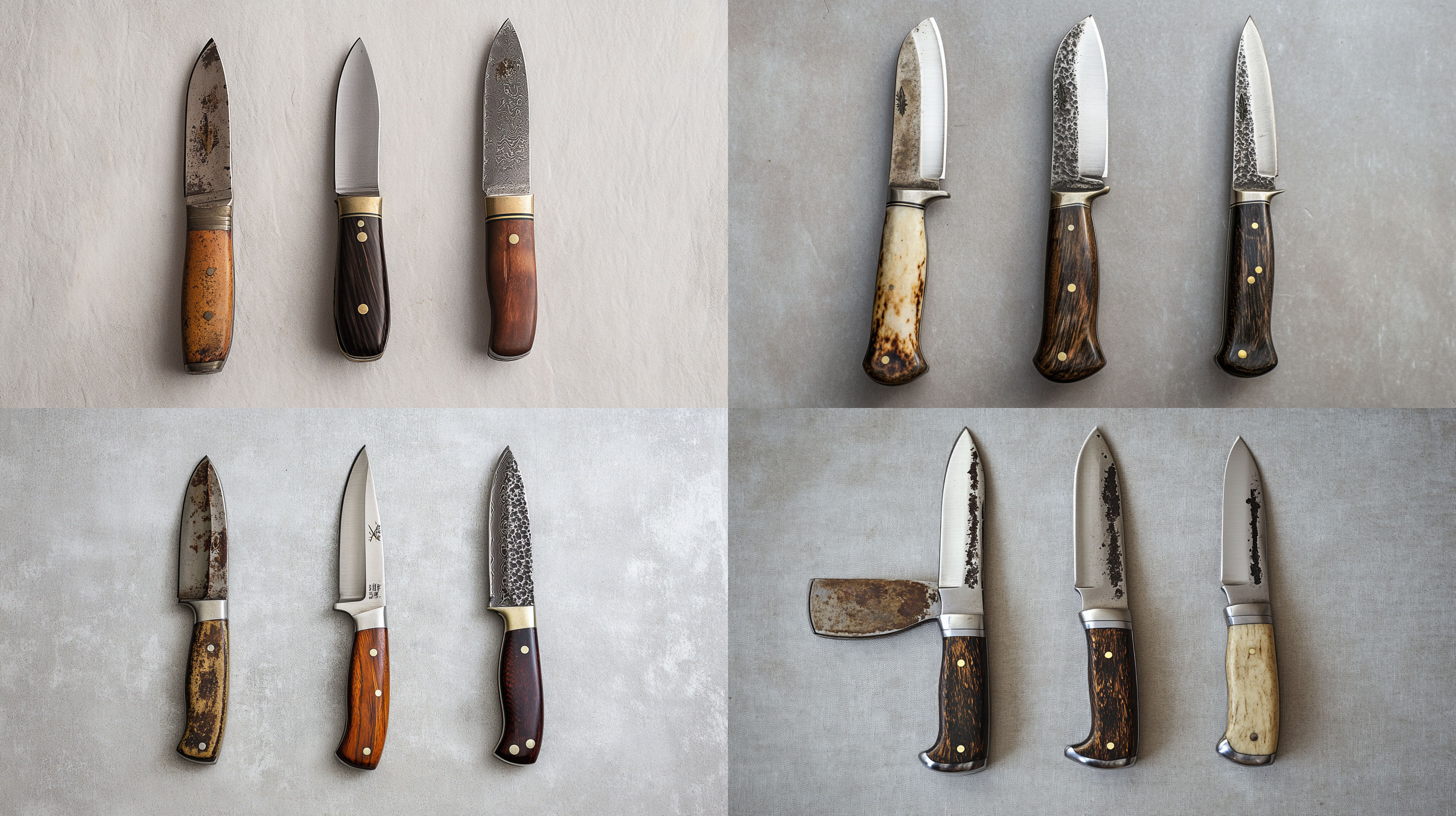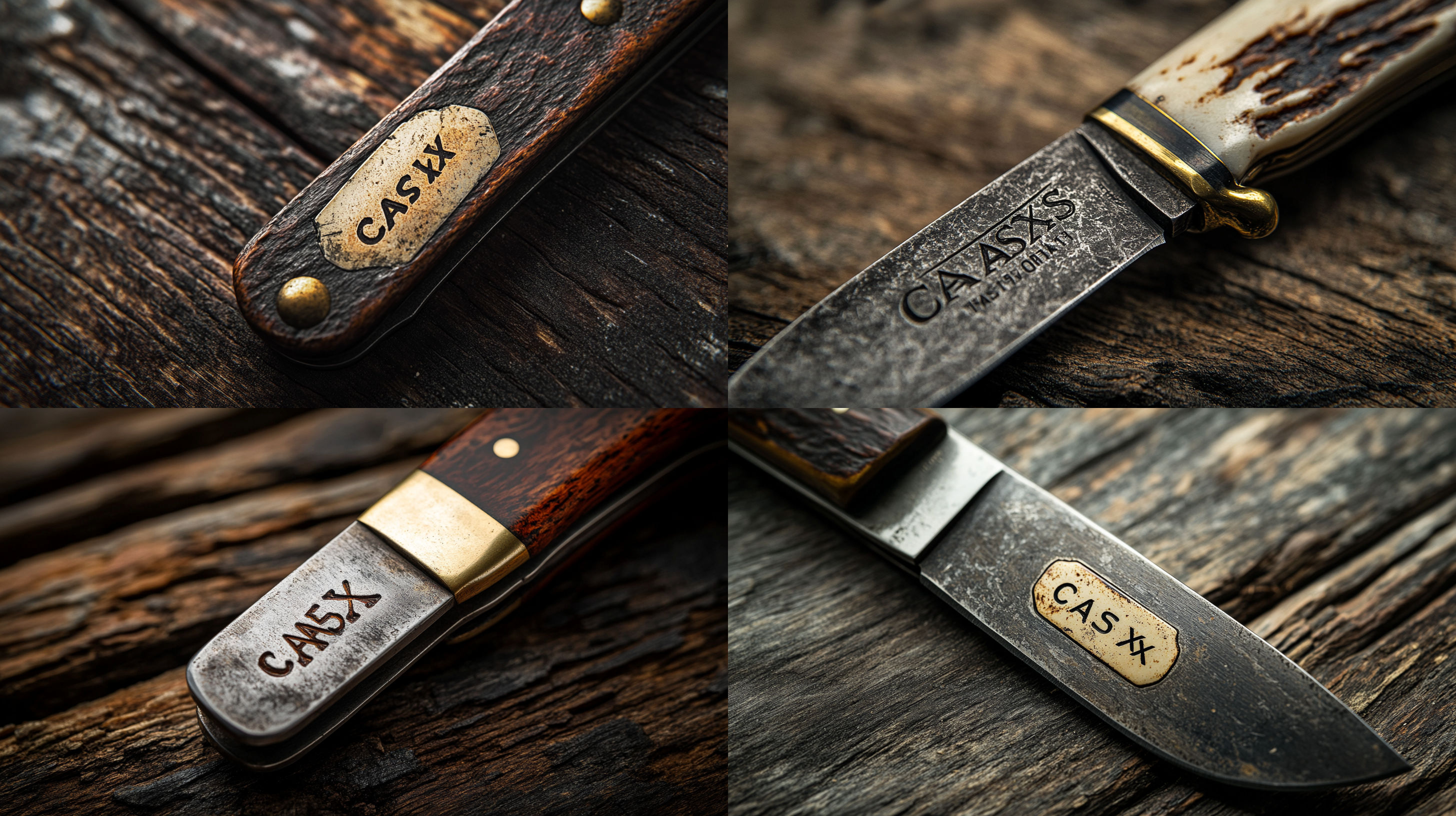Introduction to Case XX Pocket Knife Collecting
Case XX pocket knives stand as one of the most beloved American collectibles, with a rich history dating back to 1889 when the company was founded by the Case brothers. What began as a small cutlery business in upstate New York has evolved into perhaps the most collected knife brand in the world. Vintage Case knives, particularly those marked with the distinctive “XX” symbol, have become highly sought after by collectors and enthusiasts alike.
What Makes Old Case XX Knives Valuable?
The value of old Case XX pocket knives is determined by several key factors that experienced collectors carefully evaluate. Unlike modern production knives, vintage Case knives often appreciate in value, particularly rare patterns or those from specific manufacturing eras.
Key Value Factors for Vintage Case Knives
- Age and Era - Knives from certain manufacturing periods, particularly pre-1970, often command higher prices
- Pattern Rarity - Unusual or limited production patterns are more valuable
- Handle Material - Exotic materials like jigged bone, stag, or pearl can significantly increase value
- Condition - Mint or near-mint condition knives with original finishes and intact blades are worth more
- Original Packaging - Having the original box and paperwork greatly enhances value
- Tang Stamps - The specific marking on the tang helps date the knife and verify authenticity
Vintage Case XX Knife Market Highlights
Historical Timeline of Case Knives
- 1889
Company Founding
Brothers W.R., Jean, John, and Andrew Case began selling handcrafted knives under the name Case Brothers Cutlery Company in upstate New York. - 1905
W.R. Case & Sons
After relocating to Bradford, PA, the company was reorganized as W.R. Case & Sons Cutlery Company, which remains its name today. - 1920-1940
The Golden Age
Case produced some of its most collectible patterns and introduced many innovations. Knives from this era are highly sought after. - 1940-1964
WWII Era and Post-War
Case produced military knives during WWII. Post-war knives with specific tang stamps from this period are prized by collectors. - 1970
Dot Dating System
Case introduced its famous dot dating system, adding 10 dots to tang stamps and removing one each year, making knife dating easier.
How to Identify and Date Your Case XX Knife
Case Cutlery has thoughtfully provided collectors with a reliable dating system through their tang stamps - the markings found on the base of the main blade. This system has evolved over time, making it possible to determine when a knife was manufactured with remarkable precision.
Understanding Case Tang Stamps
The tang stamp is the most important identifier for dating a Case knife. Here’s how to use it:
Pre-1970 Knives:
- Look for specific characteristics in the “CASE XX” logo
- The presence of “U.S.A.” and its placement helps narrow down the era
- Pre-1940 knives often have “TESTED XX” in the stamp
1970 and Later - The Dot Dating System:
- In 1970, Case added 10 dots beneath the “U.S.A.” on tang stamps
- Each subsequent year, one dot was removed until 1979
- The pattern repeated in 1980 with 10 dots again
- The cycle continues to the present, repeating every decade
Pattern Numbers and Identification
Case also assigns each knife pattern a unique number that provides valuable information:
- The first digits indicate the number of blades
- The middle digits describe the handle pattern or material
- The last digits represent the specific knife pattern
For example, pattern “6254 SS” indicates:
- “6” means the knife has 2 blades
- “2” denotes the handle pattern
- “54” represents the Trapper pattern
- “SS” indicates stainless steel blades
Case XX Knife Condition Assessment
Check applicable items to help determine your knife's condition rating
- All blades open and close smoothly with good snap
- Blades have no chips, cracks, or significant rust
- Original edge with no improper resharpening
- Handle has no cracks, chips or repairs
- Original bolsters intact with minimal wear
- Tang stamp fully visible and legible
- No blade play when open
- Original shield present and secure
- Original box and paperwork present
Most Valuable Case XX Knife Patterns
While all vintage Case knives hold appeal, some patterns consistently achieve higher values due to their rarity, design excellence, or historical significance. Understanding which patterns are most sought after can help collectors focus their searches and investments.
Highly Collectible Case Patterns
- Stag Handle Knives - Especially pre-1970 models with genuine deer antler handles
- Melon Testers - A distinctive pattern with a specialized blade for testing fruit ripeness
- Doctors’ Knives - Medical-inspired folding knives with specialized tools
- Cheetah Pattern - A distinctive switchblade-style knife with a push-button release
- Commemorative and Limited Editions - Special production runs with unique designs or significance
- Early Trappers (Pattern 54) - The classic 2-blade folding knife, especially pre-WWII examples
- Congress Pattern - The traditional 4-blade pocket knife with sleek design
- Stockman Pattern - Three-blade pocket knife with clip, sheepsfoot, and spey blades

Price Ranges for Collectible Case XX Knives
Current market values based on collector sales and auction results
</tbody>
</table>
Handle Materials and Their Impact on Value
Case has utilized numerous handle materials throughout its history, each affecting both the aesthetics and value of their knives. Understanding these materials helps collectors identify and value knives more accurately.
Traditional Handle Materials
Bone - The most common traditional material, often jigged for better grip
- Colors include: Amber, Red, Green, Blue, and Natural
- Special finishes like jigged bone command premiums
Stag - Natural deer antler handles are among the most valuable
- Pre-1970 genuine stag handles are especially desirable
- Later stag handles may be imitation or “Molded Stag”
Pearl - Highly prized and relatively rare
- Mother-of-pearl offers iridescent beauty
- More fragile than other materials, mint examples are scarce
Exotic Materials - Limited runs with special handle materials
- Buffalo horn
- Exotic hardwoods
- Fossil materials
- Custom materials for commemorative editions

Recent Auction Sales of Vintage Case XX Knives
Notable recent sales showing market trends
| Category | Price | Notes |
|---|---|---|
| Pre-1940 Case XX Knives (Mint) | $500-$5,000+ | Highly dependent on pattern and condition |
| 1940-1964 Case XX Patterns | $150-$800 | Premium for original box and papers |
| Stag Handle Models (Pre-1970) | $200-$1,500 | Higher value for rare patterns |
| Melon Tester Pattern | $400-$1,200 | Extremely collectible pattern |
| Standard Trapper (1970s-1980s) | $50-$200 | Depends on handle material and condition |
| Limited Edition Commemoratives | $100-$700 | Higher with original packaging |
| Damascus Blade Models | $150-$500 | Modern limited editions with special steels |
</tbody>
</table>
Where to Buy and Sell Vintage Case XX Knives
The market for vintage Case XX knives remains robust, with multiple venues catering to collectors of all levels. Each marketplace offers different advantages depending on whether you’re buying or selling.
Popular Marketplaces for Case Knife Collectors
Online Platforms
- eBay remains the largest marketplace for vintage Case knives
- Etsy features many vintage knife sellers with curated selections
- Specialized forums like All About Pocket Knives have active buy/sell sections
Knife Shows and Collector Gatherings
- The Case Collectors Club hosts regional meetings
- General knife shows like the Blade Show feature vintage Case dealers
- Antique and collectible shows often include knife dealers
Specialty Dealers
- GP Knives maintains a vintage Case section
- Frank’s Classic Knives specializes in collectible Case models
- Old Pocket Knives focuses on vintage folding knives
Auction Houses
- Heritage Auctions occasionally features premium Case knife collections
- Regional auction houses often include estate collections with vintage knives
Essential Resources for Case Knife Collectors
Case Knives Official Website
The manufacturer's official website with detailed dating information, history, and current products.
All About Pocket Knives Forum
Active community of knife collectors discussing Case XX pricing, identification, and valuation challenges.
Vintage Case Knives at GP Knives
Curated selection of vintage Case knives with detailed descriptions and condition notes.
Frank's Classic Knives
Specialized dealer focusing on collectible vintage Case knives with expert descriptions.
Old Pocket Knives
Information resource and marketplace for vintage Case patterns and collectibles.
Case Knife Identification Guide
Video guide demonstrating how to identify different years and types of Case pocket knives.
Historical Case Knives on Etsy
Curated marketplace featuring vintage and antique Case XX knives from multiple sellers.
eBay Case XX Collection
The largest online marketplace for buying and selling vintage Case XX pocket knives.
Caring for Vintage Case XX Knives
Whether you’re a serious collector or simply inherited an old family Case knife, proper care ensures these American treasures maintain their condition and value for generations to come.
Maintenance Best Practices
Cleaning
- Gently clean blades with mild soap and water
- Avoid harsh chemicals or abrasives
- Cotton swabs can reach into crevices
- For light rust, use fine oil and 0000 steel wool (with extreme caution)
Lubrication
- Use food-grade mineral oil for blade pivots
- Apply sparingly to avoid attracting dust
- Wipe away excess oil completely
Storage
- Store in a climate-controlled environment
- Avoid extreme humidity or temperature changes
- Individual soft pouches prevent scratching
- Original packaging adds significant value
Display Considerations
- Keep away from direct sunlight to prevent fading
- Glass-topped display cases offer protection while showcasing
- Consider UV-protective glass for valuable collections
What to Avoid
- Never use power tools or aggressive cleaning methods
- Avoid modern automatic knife sharpeners
- Don’t attempt to “restore” rare knives - patina is often valued
- Never store in leather sheaths long-term (traps moisture)
Common Questions About Old Case XX Knife Values
How do you know how old a Case knife is?
The Case blade tang dating system allows you to identify your knife with a year or era in which the knife was manufactured. The dating symbols are found on the tang stamps at the base of the knife's main blade.In 1970, Case added ten dots beneath the "U.S.A" on all knife tangs. Each year a dot was removed, creating a simple dating system. By 1979, only one dot remained, and in 1980, they started again with ten dots. This cycle continues to the present day.
For pre-1970 knives, you’ll need to study the specific characteristics of the tang stamp, including:
- The style of the Case XX logo
- Presence and placement of "U.S.A."
- Other markings like "TESTED XX"
Reference guides and collector resources can help identify specific tang stamp eras.
Do Case knives increase in value?
Yes, many Case knives do increase in value over time, especially rare patterns, commemorative editions, and knives in excellent condition. Case has developed a strong collector following, with certain vintage patterns appreciating significantly.However, not all Case knives appreciate equally. Factors that influence appreciation include:
- Rarity of the pattern
- Handle materials (stag and pearl typically appreciate more)
- Historical significance
- Original condition and packaging
- Manufacturing era (pre-1970 knives often command premiums)
Modern Case knife releases often come at premium prices, but the real investment value is typically found in rare vintage models and limited editions that are no longer in production.
What are the most collectible Case pocket knife patterns?
The most collectible Case patterns include:
- Stag Handle Patterns - Especially pre-1970 models with genuine deer antler
- Melon Tester - A distinctive specialized pattern that’s highly sought after
- Doctor’s Knife - Medical-inspired folding knife with specialized tools
- Traditional Trappers - Classic two-blade design, especially in rare handle materials
- Stockman Patterns - Three-blade design with clip, sheepsfoot and spey blades
- Congress Pattern - Four-blade design with sleek profile
- Commemorative Editions - Limited production runs marking special events
- Exotic Handle Materials - Pearl, ivory (antique only), fossil, etc.
Extremely rare or unusual patterns like the TB Hicks whittler, certain sowbelly models, and pre-1940 patterns in mint condition are particularly valuable to serious collectors.
Do pocket knives hold their value?
Quality pocket knives, especially collectible brands like Case, typically hold their value well compared to many other collectibles. Several factors determine how well a pocket knife maintains or increases in value:
- Brand Reputation - Premium brands like Case, Remington, and Winchester tend to hold value better
- Condition - Mint or near-mint condition knives retain value best
- Rarity - Limited production runs and discontinued patterns appreciate more
- Provenance - Historical significance or famous ownership increases value
- Original Packaging - Having the original box and papers significantly impacts value
Case XX knives in particular have a strong collector market, with certain vintage patterns appreciating substantially over time. However, modern production knives may take longer to appreciate compared to their vintage counterparts.
As with any collectible, knives should be purchased primarily for enjoyment, with potential appreciation as a secondary consideration.
What is special about Case XX knives?
Case XX knives are special for several compelling reasons:
- American Heritage - Case represents over 130 years of American cutlery tradition, founded in 1889
- Quality Craftsmanship - Each knife undergoes a rigorous 160-step manufacturing process
- The "XX" Trademark - The double X stands for Case’s exclusive steel formula and quality testing
- Collectibility - Case knives are among the most collected in the world, with a dedicated collector club
- Dating System - The innovative tang stamp system makes it easy to determine when knives were made
- Generational Appeal - Case knives are often passed down as family heirlooms
- Variety - Case offers hundreds of different patterns and handle materials
- Historical Significance - Case has supplied knives to the US military in multiple conflicts
These factors combine to make Case XX knives not just tools, but cherished collectibles and artifacts of American manufacturing history.
Conclusion: The Enduring Appeal of Vintage Case XX Knives
The world of vintage Case XX pocket knives offers a fascinating blend of American craftsmanship, history, and collecting opportunity. These iconic tools represent more than just sharp blades—they’re tangible connections to America’s manufacturing heritage and often personal family histories.
For collectors, the hunt for rare patterns and pristine examples continues to drive enthusiasm in the market. The systematic dating methods, clear pattern identification, and strong community support make Case knives particularly accessible to new collectors, while still offering depth and challenge for experienced enthusiasts.
Whether inherited from a grandparent or carefully sought at knife shows and online marketplaces, old Case XX pocket knives retain both sentimental and monetary value in today’s collector market. Their enduring appeal speaks to quality craftsmanship that has stood the test of time—much like the company itself, which continues to produce knives in America over 130 years after its founding.
As you embark on your own Case knife collecting journey, remember that condition, rarity, age, and historical significance all play important roles in determining value. But perhaps most importantly, these pocket-sized treasures connect us to American traditions and craftsmanship that remain as relevant today as when the first Case knife was crafted over a century ago.
Get a Professional Appraisal
Unsure about your item’s value? Our certified experts provide fast, written appraisals you can trust.
- Expert report with photos and comps
- Fast turnaround
- Fixed, upfront pricing
No obligation. Secure upload.
| Item | Price | Date | Auction House |
|---|---|---|---|
| Case XX 1940's Stag Handle Trapper | $875 | April 2023 | eBay |
| Case XX 6344 Stockman (1940-1964) | $225 | March 2023 | Private Sale |
| Case XX Melon Tester with White Composition Handle | $1,100 | February 2023 | Knife Collector's Show |
| Case XX 1976 Red Bone Trapper (4-dot) | $250 | January 2023 | eBay |
| Case XX Commemorative Set (WWII Anniversary) | $650 | December 2022 | Heritage Auctions |




